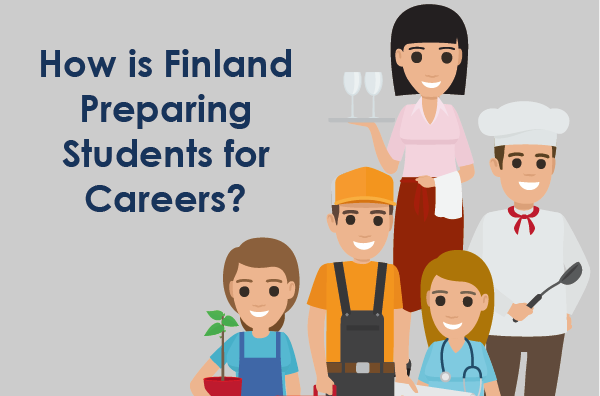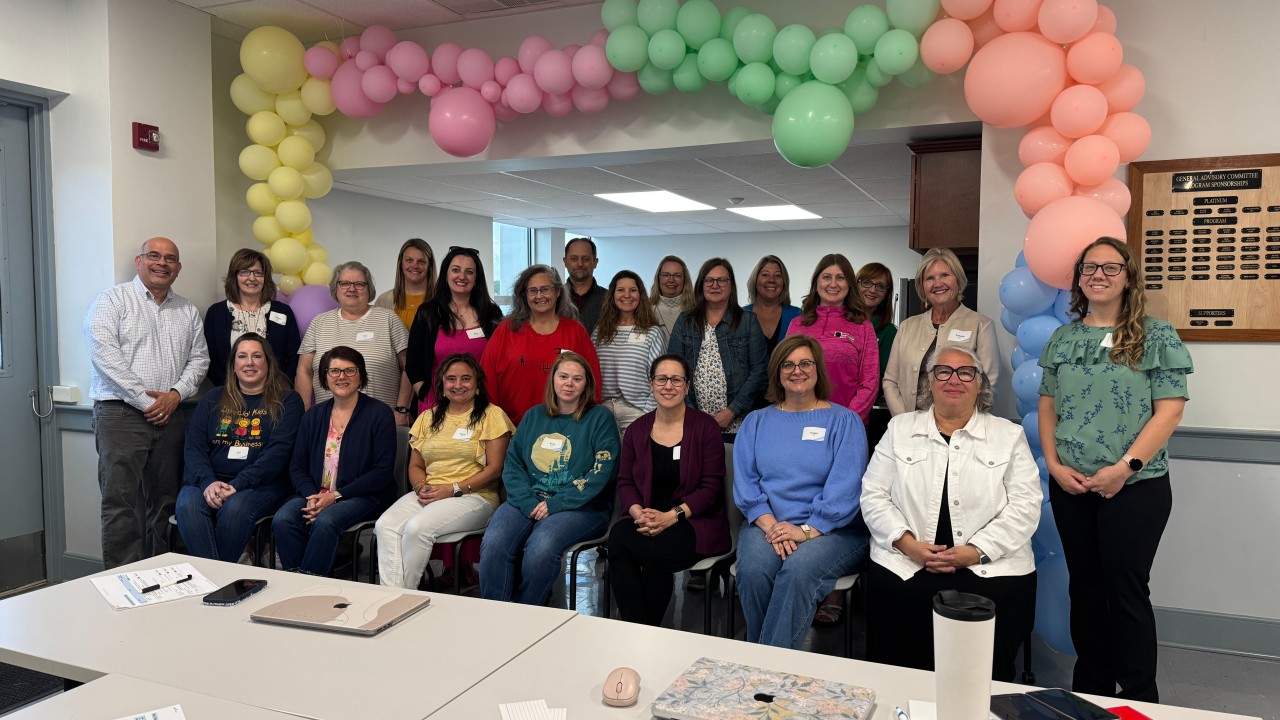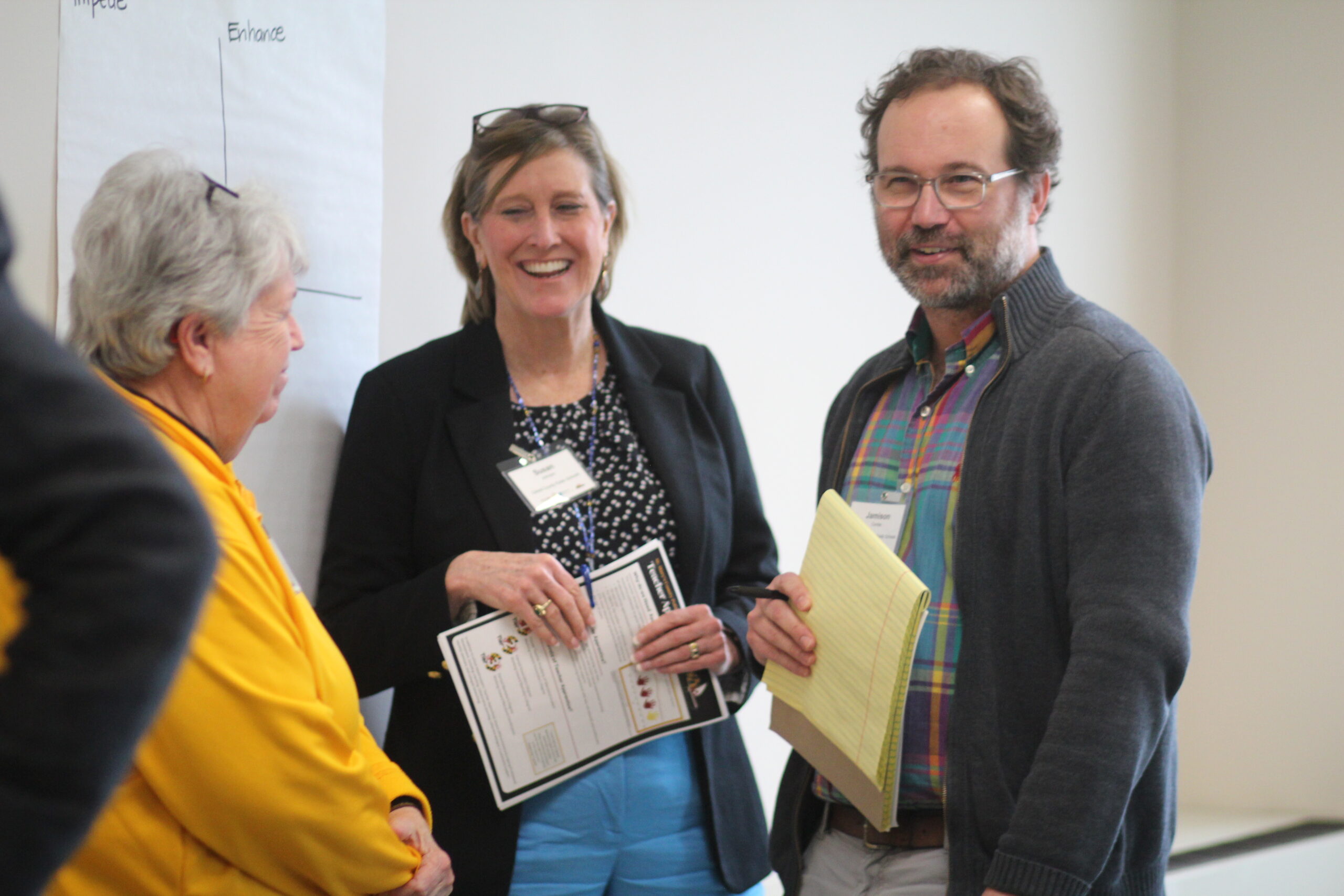
By Nathan Driskell
NCEE staff saw some of the very best of Finnish vocational education in action when we visited the state-of-the-art Omnia Vocational School in Espoo, Finland this past month. Omnia serves pupils from ages 16-82: 7,000 students in upper secondary education and post-secondary education along with over 25,000 adults seeking some form of continuing learning. At this school, we heard from administrative and pedagogical leaders about the school’s philosophy of education. Educators saw themselves as guides for students to help them plan their own learning path and choose the skills they would need to develop to reach their goals. Students, in turn, were able to engage in learning at a flexible pace and in more versatile learning environments that blended digital, classrooms and workspaces.
This flexible view of competency-based learning facilitated by guiding teachers was on display in the three classrooms we visited – although in truth, none resembled classrooms so much as ingeniously simulated workspaces. In the first, pupils were researching the latest fashion trends, sketching out an array of chic dresses and jumpers, stitching together fabrics and producing their elegant creations using state-of-the-art textile equipment. Examples of students’ products were scattered throughout the room, including some pieces that were fit for a runway and others that would be used for major opera productions. In the next classroom, students learned about landscape architecture by laying tile, brick and wood to construct a whimsical terraced indoor garden, complete with benches and a large tree. And in the third, aspiring builders constructed their own full-sized cabins from the ground up, and prepared to sell them to market buyers in search of summer homes.
The expectation that the work of students as young as 16 would be good enough to sell on the market to sophisticated buyers was common across all the students and teachers we spoke with. These high expectations motivated students to work hard and helped them understand the relevance – and potentially lucrative nature – of the vocational pathway they had chosen. But we also learned that there was another strategy at work. Omnia had developed a sustainability strategy by which some proceeds from the sale of student work cover the schools’ costs in parts, labor and equipment maintenance. Although Omnia was admittedly incubated with a hefty philanthropic investment from a range of businesses and Espoo community organizations, its educational model enabled it to sustain itself financially. And while doing so, it was producing the next generation of Finland’s highly skilled workers.
Whether Finland will be able to match the innovative, state-of-the-art simulated working and learning environments at Omnia in all vocational schools across the country remains to be seen. Ensuring that all vocational learning experiences are flexible, rigorous and aligned to future workforce needs as called for in the new VET policy is a tall order. In response to continuing shortages of skilled labor and concerns about rising dropout rates in VET, the Finns have recently instituted ambitious reforms to make their VET system even more effective. Currently, about 42 percent of Finnish students who finish compulsory education go on to vocational upper secondary school, and those who complete vocational education have the opportunity to continue on to an academic track or the world of work. Finland wants its system to serve 50 percent of students, enable those students to do the jobs of today and tomorrow, meet students of all levels where they are, instill the necessary academic and work-based skills in students to be successful for life, prepare first-time workers to be successful on the labor market, and serve adult learners trying to upskill so they can fill vacancies in more highly skilled jobs. Vocational education has been re-restructured into flexible modules, which can now be taken in diverse settings including classrooms, online or the workplace. An “Anticipation Unit” continuously studies labor market trends and forecasts and workplace innovations, and reviews qualifications and modules to ensure that they are well-matched to the economic needs of today and the future.
The success of Finland’s experiments in VET remain to be seen. But if our experience at Omnia is any indication, the country has world-class examples of VET in place today.




